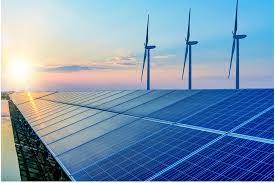
You know the drill. You open your energy bill, wince at the number, and tell yourself, “Next month I’ll start tracking usage properly.” But then the invoice gets paid, the day gets busy, and nothing changes.
Sound familiar?
For small business owners, especially in retail, energy usage is one of those background costs that sneakily chips away at margins. Yet the idea of installing hardware—smart meters, sensors, sub-meters—feels like a costly, disruptive hassle. What if you could skip the hardware altogether?
Good news: You can.
Let’s unpack how to track your energy usage without installing a single device—and why it’s a smart move if you’re trying to reduce retail store energy bills.
Can you really track energy use without any new hardware?
Yes. Thanks to advances in data analytics, you can get detailed insights into your energy usage using only the data you already have—like your digital energy bills and smart meter reads (which most retailers now provide).
Think of it like this: Your energy bill is a report card. It doesn’t just tell you the total cost—it holds clues about time-of-use patterns, peak demand windows, and even operational inefficiencies.
Modern software platforms can ingest this data, crunch the numbers, and surface insights that were previously buried in fine print.
What are the best ways to monitor energy usage without sensors?
Here are three low-effort, high-impact options:
1. Retailer data portals
Most major energy retailers now offer online portals or apps that show:
- Daily or half-hourly consumption (if you’re on a smart meter)
- Comparative usage data
- Alerts for unusually high usage days
These tools are free, though sometimes limited in how much history they store.
2. Bill-scanning software
Platforms like Wattly or Energy Bill Doctor allow you to upload PDF or CSV bills. They analyse historical usage, identify spikes, and even suggest better plans. These can also flag if your “peak/off-peak” split is working for you—or working against you.
3. Automated energy procurement services
These platforms don’t just find cheaper energy rates. Some of them also provide built-in usage dashboards. They scan your retailer data to provide monthly usage trends, forecast bills, and benchmark you against similar businesses.
You get the kind of visibility usually reserved for enterprise-level setups—but without laying a single cable.
How accurate are these “no-hardware” solutions?
Accuracy depends on your meter type and data access. If you’ve got a digital interval meter (which most commercial premises in Australia do), usage can be tracked down to 15–30 minute intervals.
It’s not quite as granular as a dedicated sub-meter on each fridge or light bank, but it’s plenty for identifying:
- Daily operating patterns
- After-hours energy wastage
- Weekend anomalies
- Whether your “off-peak” plan is even working for your business
In other words: it’s enough to drive change.
Why are so many businesses skipping hardware installs?
Cost and convenience, mostly.
Installing energy monitoring equipment often means downtime, rewiring, and upfront expense—just to find out what you already suspected: someone keeps leaving the lights on, or your HVAC system runs longer than it should.
That’s not to say hardware isn’t useful—it is. But for a lot of small operators, especially retailers, the juice isn’t worth the squeeze. At least not as a first step.
No-hardware tracking gives you quick wins, cheaper bills, and better decisions without waiting on an electrician or shelling out thousands.
Real-world example: A boutique retail chain saves without installing a thing
Take “Kind Goods,” a small eco-retail chain in Brisbane. They used an automated bill analysis platform to monitor usage across three locations.
Within weeks, they discovered:
- Their air con was kicking in 90 minutes before doors opened
- One store used 12% more power than the others, despite similar layouts
- Their “green energy” plan wasn’t providing any real cost benefit
They made small operational tweaks—adjusting open hours, programming thermostats, and switching providers—and cut costs by 17% annually.
No sensors. No hardware. Just better visibility.
Is this really enough to reduce retail store energy bills?
Absolutely—especially when paired with small operational changes.
Here’s how software-based tracking leads to savings:
- Pattern detection: Pinpoints inefficient routines
- Contract mismatch alerts: Reveals when you’re on the wrong tariff
- Forecasting: Prevents bill shock and helps with cashflow
- Peer benchmarking: Lets you see how you stack up against similar businesses
And here’s the kicker: platforms that combine usage tracking with automated procurement can reduce costs and ensure you stay on competitive rates long-term.
FAQ: Tracking Energy Without Hardware
Q: What if I only have paper bills?
A: You can scan and upload them to certain software tools, though digital files (CSV, PDF) work best.
Q: Do I need permission from my energy retailer?
A: For most online platforms, no. But some may request access to your NMI (National Meter Identifier) to pull smart meter data directly.
Q: Will this tell me what appliances are the problem?
A: Not specifically. It gives you store-wide patterns. But if you spot a usage spike at 3am, for example, it’s a strong hint something’s running unnecessarily.
Final thoughts: Know more, spend less
You don’t need fancy sensors or a tech degree to understand your business’s energy usage. These days, smarter software tools let you access powerful insights using nothing but the data you already have.
And in a climate where costs keep creeping up, knowing where your dollars go is more than smart—it’s necessary.
For Aussie retailers looking to reduce overheads without making things more complicated, the path is clear. A simple shift in how you track energy can help reduce retail store energy bills quietly and consistently.
Because sometimes, the smartest tools are the ones that don’t need to be plugged in at all.
